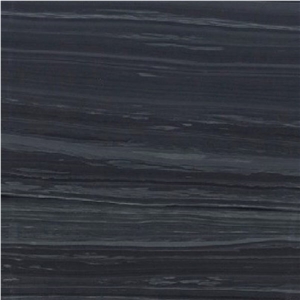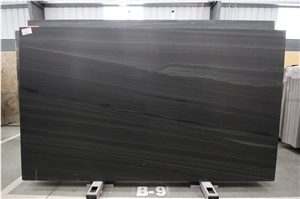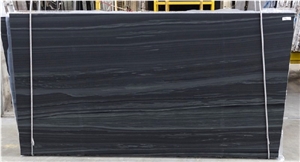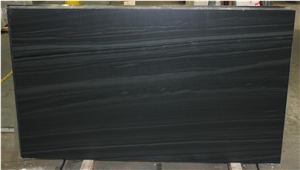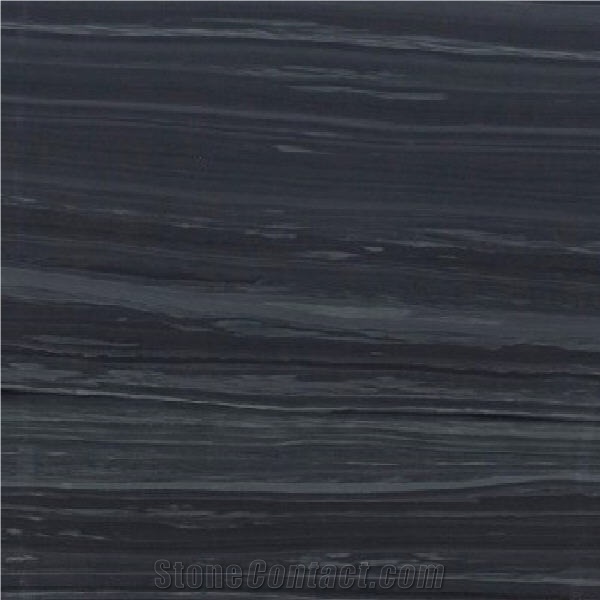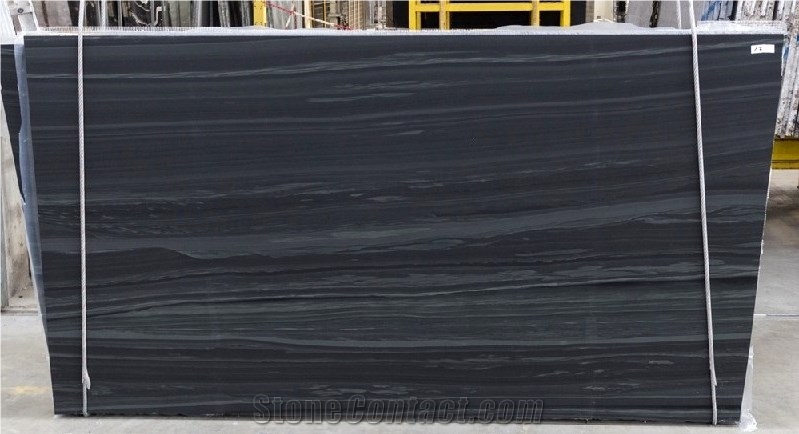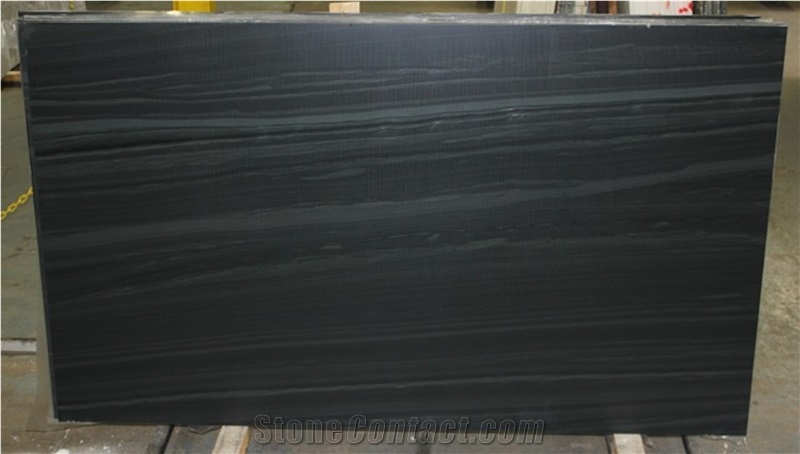Hematite Black Marble
 China
China
Hematite Black Marble is a kind of black marble quarried in China. This stone is especially good for Wall and floor applications, countertops, mosaic, fountains, pool and wall capping, stairs, window sills and other design projects. It also called Hematite Dark Grey Marble, Black Wood Vein Marble, Black Wooden Marble, Wooden Black Marble . Hematite Black Marble can be processed into Polished, Sawn Cut, Sanded, Rockfaced, Sandblasted, Tumbled and so on.

Are there color variations of China's Hematite Black Marble?

Can I use vinegar on Hematite Black Marble sink?

Can China's Hematite Black Marble be used outdoors?

Can Hematite Black Marble be given a flamed surface treatment?

Is Hematite Black Marble good for swimming pool?

How thick is China's Hematite Black Marble slabs?

Is China's Hematite Black Marble an expensive stone?

Can I use Hematite Black Marble for a kitchen sink?

What is the coefficient of friction of Filled China's Hematite Black Marble tiles?

What is the minimum depth of a Hematite Black Marble reception desk?

How far should Hematite Black Marble reception desk be from wall?

What is sandblasted finish Hematite Black Marble?

Is Hematite Black Marble or granite better for stairs?

Can China's Hematite Black Marble be used in a office?

Is Hematite Black Marble heat tolerant?

Are polished Hematite Black Marble steps slippery?

Can heat cause Hematite Black Marble fireplace to crack?

Does chlorine affect Hematite Black Marble?

What is the standard size of Hematite Black Marble reception table?

How does Hematite Black Marble countertop react to heat?

How do you antique Hematite Black Marble?

What is antique finish Hematite Black Marble?

What is the average density of China's Hematite Black Marble?

Can China's Hematite Black Marble be used exterior applications in hot climates?

Can China's Hematite Black Marble be used in landscaping?

What happens if Hematite Black Marble gets too hot?

What grade is China's Hematite Black Marble?

Are Hematite Black Marble sinks hard to clean?
-

Xiamen Landiview Stone Co. Ltd.
 China
China
 8YRDiamond members are premium members on platform, providing members with comprehensive approach to promoting their products, increasing products exposure and investment return to maximize.
8YRDiamond members are premium members on platform, providing members with comprehensive approach to promoting their products, increasing products exposure and investment return to maximize.
 Verified Supplier is for prove company authenticity,including business license,trade license and effective office space,to enhance buyers' trust to suppliers and their products, reducing communication costs.
Verified Supplier is for prove company authenticity,including business license,trade license and effective office space,to enhance buyers' trust to suppliers and their products, reducing communication costs.
Contact Supplier
-

 China
China
 8YRDiamond members are premium members on platform, providing members with comprehensive approach to promoting their products, increasing products exposure and investment return to maximize.
8YRDiamond members are premium members on platform, providing members with comprehensive approach to promoting their products, increasing products exposure and investment return to maximize.
 Verified Supplier is for prove company authenticity,including business license,trade license and effective office space,to enhance buyers' trust to suppliers and their products, reducing communication costs.
Verified Supplier is for prove company authenticity,including business license,trade license and effective office space,to enhance buyers' trust to suppliers and their products, reducing communication costs.
Contact Supplier
-

 China
China
 4YRDiamond members are premium members on platform, providing members with comprehensive approach to promoting their products, increasing products exposure and investment return to maximize.
4YRDiamond members are premium members on platform, providing members with comprehensive approach to promoting their products, increasing products exposure and investment return to maximize.
 Verified Supplier is for prove company authenticity,including business license,trade license and effective office space,to enhance buyers' trust to suppliers and their products, reducing communication costs.
Verified Supplier is for prove company authenticity,including business license,trade license and effective office space,to enhance buyers' trust to suppliers and their products, reducing communication costs.
Contact Supplier
-

 China
China
 4YRDiamond members are premium members on platform, providing members with comprehensive approach to promoting their products, increasing products exposure and investment return to maximize.
4YRDiamond members are premium members on platform, providing members with comprehensive approach to promoting their products, increasing products exposure and investment return to maximize.
 Verified Supplier is for prove company authenticity,including business license,trade license and effective office space,to enhance buyers' trust to suppliers and their products, reducing communication costs.
Verified Supplier is for prove company authenticity,including business license,trade license and effective office space,to enhance buyers' trust to suppliers and their products, reducing communication costs.
Contact Supplier
-

Xiamen Thinkrock Stone Imp&Exp Co.,Ltd.
 China
China
 Verified Supplier is for prove company authenticity,including business license,trade license and effective office space,to enhance buyers' trust to suppliers and their products, reducing communication costs.
Verified Supplier is for prove company authenticity,including business license,trade license and effective office space,to enhance buyers' trust to suppliers and their products, reducing communication costs.
Contact Supplier
-

Xiamen Thinkrock Stone Imp&Exp Co.,Ltd.
 China
China
 Verified Supplier is for prove company authenticity,including business license,trade license and effective office space,to enhance buyers' trust to suppliers and their products, reducing communication costs.
Verified Supplier is for prove company authenticity,including business license,trade license and effective office space,to enhance buyers' trust to suppliers and their products, reducing communication costs.
Contact Supplier
-

-

XIAMEN NEW EAST STONE CO., LTD.
 China
China
 Verified Supplier is for prove company authenticity,including business license,trade license and effective office space,to enhance buyers' trust to suppliers and their products, reducing communication costs.
Verified Supplier is for prove company authenticity,including business license,trade license and effective office space,to enhance buyers' trust to suppliers and their products, reducing communication costs.
Contact Supplier
-

Xiamen BoKing Import & Export Trade Co.,Ltd
 China
China
 Verified Supplier is for prove company authenticity,including business license,trade license and effective office space,to enhance buyers' trust to suppliers and their products, reducing communication costs.
Verified Supplier is for prove company authenticity,including business license,trade license and effective office space,to enhance buyers' trust to suppliers and their products, reducing communication costs.
Contact Supplier
-

The request includes: 1. surface finished, size 2. quantity required
 Syd***Wrote:
Syd***Wrote:
I am interested with Hematite Black Marble, Black Wooden marble. Is this slab still available? Do you only have one?






